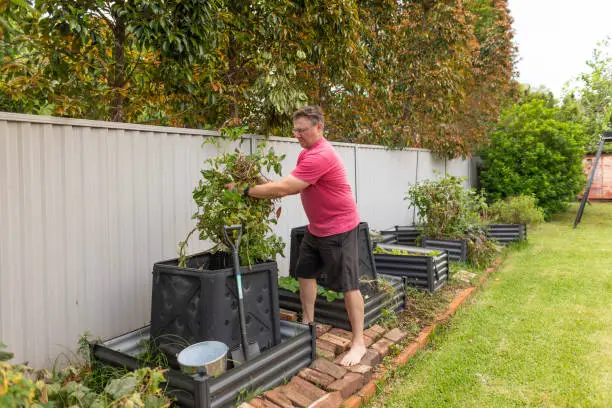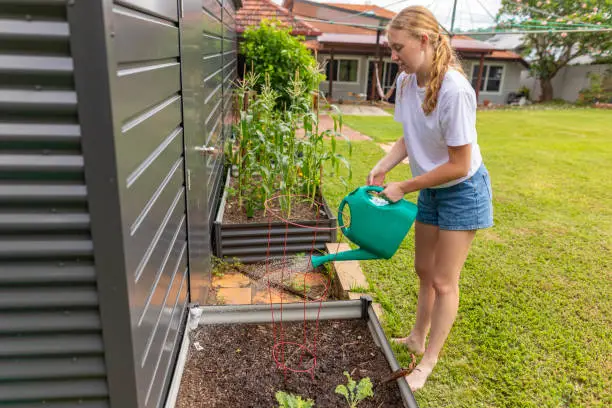A Homesteading Guide to Soil Testing and Amendment for Optimal Growth
The backyard homesteading demands more than optimism and self-reliance. It requires extensive knowledge of your land, especially the soil, which will support your garden, crops, and food. Preparing your land for homesteading requires soil testing and amendment. This eBook explores the complexities of these processes to help you achieve your homesteading goals.

Homesteading begins with a comprehensive soil test. This is essential, not a recommendation. Soil tests disclose more than pH; they also reveal nutrient levels and pollutants. Understanding your soil’s needs allows you to adjust your gardening operations and choose the best crops.
Soil amendment helps here. Adjusting soil composition makes it more plant-friendly. Improving water retention and aeration may involve changing pH, nutrient content, or structure.
Many homesteaders need help with acidic or alkaline soil. Your soil’s pH ranges from 0 to 14, with seven being neutral. Acidic to neutral soils (pH 6.0 to 7.0) support most plants. If your soil testing shows a pH outside this range, modify it. Lime raises pH in acidic soils, and sulfur lowers pH in alkaline soils. However, these amendments must be applied according to your soil test results to avoid further imbalance.
Soil testing often finds nutrient shortages. Amendments can replace these nutrients in depleted soil. Compostable manure and legume cover crops fix nitrogen from the air into the soil. Bone meal and rock phosphate are good sources of phosphorus, while wood ash and kelp meal are potassium sources. Too much of any nutrient is as harmful as too little; therefore, these changes must be made moderately.
Improving structure is also essential in soil amendment. Sandy or clayey soil might help root growth and moisture retention. Compost, leaf mold, and well-rotted manure increase soil structure and plant growth. Organic matter improves soil moisture retention and promotes good microbial activity, which helps plants get nutrients.
When modifying your soil, consider your homestead’s long-term viability. Overusing chemical fertilizers and additives degrades soil. Organic farming methods, including crop rotation, green manuring, and minimum tillage, can preserve soil health and fertility. These methods improve soil, biodiversity, and ecological balance on your property.
Beneficial organisms are often overlooked in soil preparation. Earthworms help create soil structure and cycle nutrients. Maintaining organic matter in the soil and reducing artificial pesticides and fertilizers can help earthworms and other beneficial creatures thrive.
Be patient when preparing land for homesteading. Soil amendment is ongoing. Amendments take time to work into your soil and yield advantages. Soil testing should be done every two to three years to track development and make modifications.
In conclusion, soil testing and amendment may seem overwhelming, but they are essential to homesteading success. Understanding and cultivating your soil is the foundation for a successful homestead and sustainable food and fulfillment. A careful soil management plan can keep your land fertile and productive for years, allowing your homesteading ambitions to bloom.
Water Source Planning: Wells, Rainwater, and Innovative Homesteader Solutions
Backyard homesteading requires several preparations, including finding a reliable water source. Homesteads depend on water for irrigation, cattle watering, and household use. Water source planning has never been more important due to weather uncertainty and the focus on sustainable living.
The well is a standard homesteading option. By drilling a well, your home can tap into subsurface aquifers for a reliable water supply. However, location, depth, and water quality determine well water viability. Where groundwater is abundant and pure, minimum treatment is needed before usage. Others may have water with minerals or pollutants that require considerable filtration or be too deep to drill.
Investigate local groundwater conditions before drilling a well. This may require consulting local drilling firms, nearby homesteaders, or the environmental or water resources agency. They can assess water quality, table depth, and regulatory limits affecting well drilling.
While researching well choices, I learned that rainwater harvesting is a sustainable and growing water collection strategy. After treating rooftop rainwater, homesteaders can store it in tanks or barrels for irrigation, livestock, and household use. Rainwater harvesting is beautiful since it requires little technology. However, local rainfall patterns determine its efficacy. A well-designed rainwater collection system can supply much of a homestead’s water in areas with heavy rainfall. Rainwater gathering may be less reliable in drought-prone locations.
To construct a rainwater collection system, calculate the roof catchment area and understand your area’s annual rainfall trends. This information helps calculate the storage tanks needed to maximize rainy periods and ensure a continuous water supply during dry months. First-flush diverters and filters can make rainwater safe for homestead usage.
Beyond wells and rainfall, there are more creative farmhouse water security methods. A pond or reservoir can provide irrigation water, a home for fish and other species, and a way to increase your homestead’s biodiversity. Your land’s terrain, soil type, size, and natural water source for the pond determine if this choice is feasible.
Another option is to reuse greywater clean wastewater from baths, sinks, washing machines, and other kitchen appliances. With correct management, greywater can be reused for irrigation and toilet flushing. Greywater systems must be designed carefully to avoid agricultural and groundwater contamination and comply with local requirements.
For individuals in dry regions or seeking maximum water self-sufficiency, atmospheric water creation may be an alternative. Though more complex and energy-intensive, these devices capture moisture from the air, supplying water even without rainfall or groundwater.
As with any homesteading task, water source planning requires balancing immediate requirements with long-term sustainability. Understanding your land, climate, and homestead demands is essential. You must be flexible and open to merging water sources and technologies to accomplish this. Farmhouses may use healthy water, rainwater during the wet season, and greywater recycling for irrigation.
Consider water quantity and quality when planning your homestead’s water strategy. Keeping your homestead healthy and productive requires testing and treating your water to fit the demands of your crops, livestock, and family.
In conclusion, water independence on your homestead requires innovation, resilience, and proactive resource management. You can find a sustainable and reliable water supply for your homestead by carefully considering your options and adjusting your water source plan to your land and local environment.






Leave a Reply